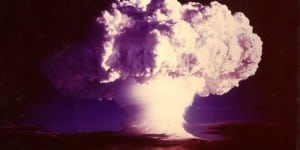
Nuclear Security & Deterrence Monitor Vol. 20 No. 31
Visit Archives | Return to Issue PDF
Visit Archives | Return to Issue PDF
Nuclear Security & Deterrence Monitor
Article 1 of 12
July 29, 2016
Lawmakers Call for No-First-Use Amid Rumors of Nuclear Posture Changes

Capitol Hill is buzzing with debate over changes to U.S. nuclear posture that President Barack Obama is rumored to be considering during his final months in office.
At the center of these debates is the potential adoption of a nuclear no-first-use posture; current…
Partner Content
Jobs